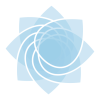Study suggests 3D digital mammography used in combination with traditional screening mammography significantly reduces recall rates.
Since mammography was introduced in the late 1960s, it has been one of the most valuable tools available to women and their physicians in the fight against breast cancer. From 1990 to 2009, as screening mammography rates approximately doubled, the breast cancer mortality rate dropped by one-third. Mammography saves lives.
However, while capable of detecting most breast cancers while they are still small and curable, traditional mammography has its limitations. At West Coast Radiology Center, we are constantly on the lookout for ways to make breast cancer screening more effective — and 3D mammography, or breast tomosynthesis, has the potential to help.
Limitations of Traditional Mammography
At Breastlink Laguna Hills, we strongly believe every woman aged 40 and above should make screening mammography a routine part of her health care. While we recognize mammography as the most cost-effective tool available to detect breast cancers early, it is not perfect. One drawback is its potential to produce false-positive and false-negative results, especially in women with dense breasts.
Screening mammography used by itself correctly identified breast cancers 78 percent of the time, according to a study published October 2002 in Radiology. Whether false-positive (a suspicious area that turns out to be normal) or false-negative (an area we believed to be normal that turns out to have an abnormality), inaccurate mammography results place undue stress on the women receiving them. It can cause fear and anxiety in women who have to return for additional testing before being cleared of breast cancer. Or, even worse, it can miss a cancer and prevent a woman from beginning treatment as early as possible.
3D Mammography Reduces Recall Rates
As physicians, we want to get the most accurate results for our patients. 3D mammography has the potential to offer more accurate results when used in combination with traditional screening mammography — that’s why we introduced this new technology to Breastlink and West Coast Breast Centers in May 2013. Recent research suggests it was the right decision for us and for our patients.
According to a study published December 2013 in Radiology, the recall rate among women receiving 3D digital mammography was 30 percent lower than it was among women receiving traditional screening mammography. The benefits of 3D mammography were especially significant among younger women and those with dense breast tissue.
“The value of decreasing screening mammography recall rates is immense,” wrote lead author Brian M. Haas, M.D. “Decreased recall rates can be directly translated into less patient anxiety and decreased costs for additional diagnostic examinations.”
In addition to reducing recall rates, research conducted by Elizabeth Rafferty, M.D. a radiologist at Massachusetts General Hospital in Boston, Mass., suggests using 3D mammography in combination with standard digital mammography can increase diagnostic sensitivity by approximately 10 percent.
“Almost all of the gains in diagnostic sensitivity with the combined modality were attributable to the improved detection and characterization of invasive cancers, which are the cancers we are most concerned about because of their potential to metastasize,” Dr. Rafferty said.
While we continue to believe mammography is the most important tool in the fight against breast cancer and recommend routine screening mammography for all women aged 40 and above, 3D mammography helps us boost our efforts to provide women with one of the most accurate breast screening tools available.
To learn more, please visit our 3D digital mammography page. You may also request an appointment to speak with our staff about breast screening options available to you.




Add new comment